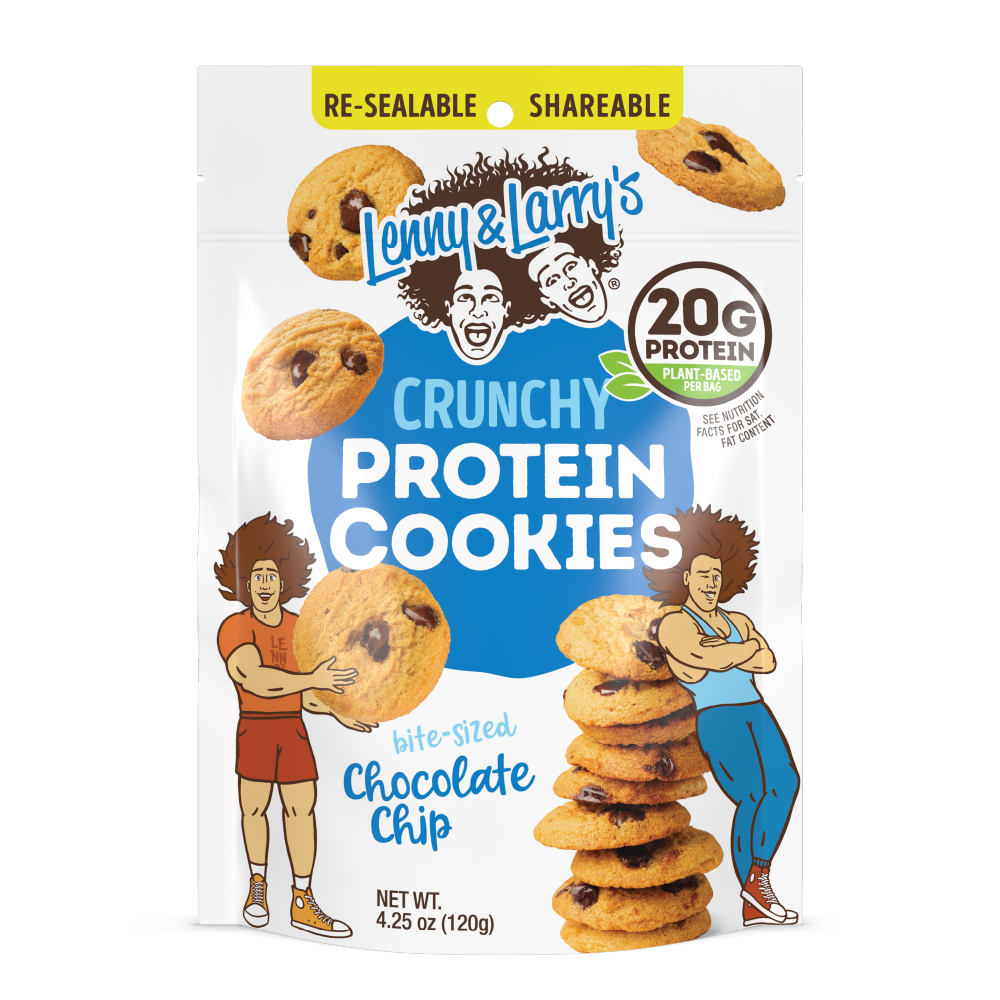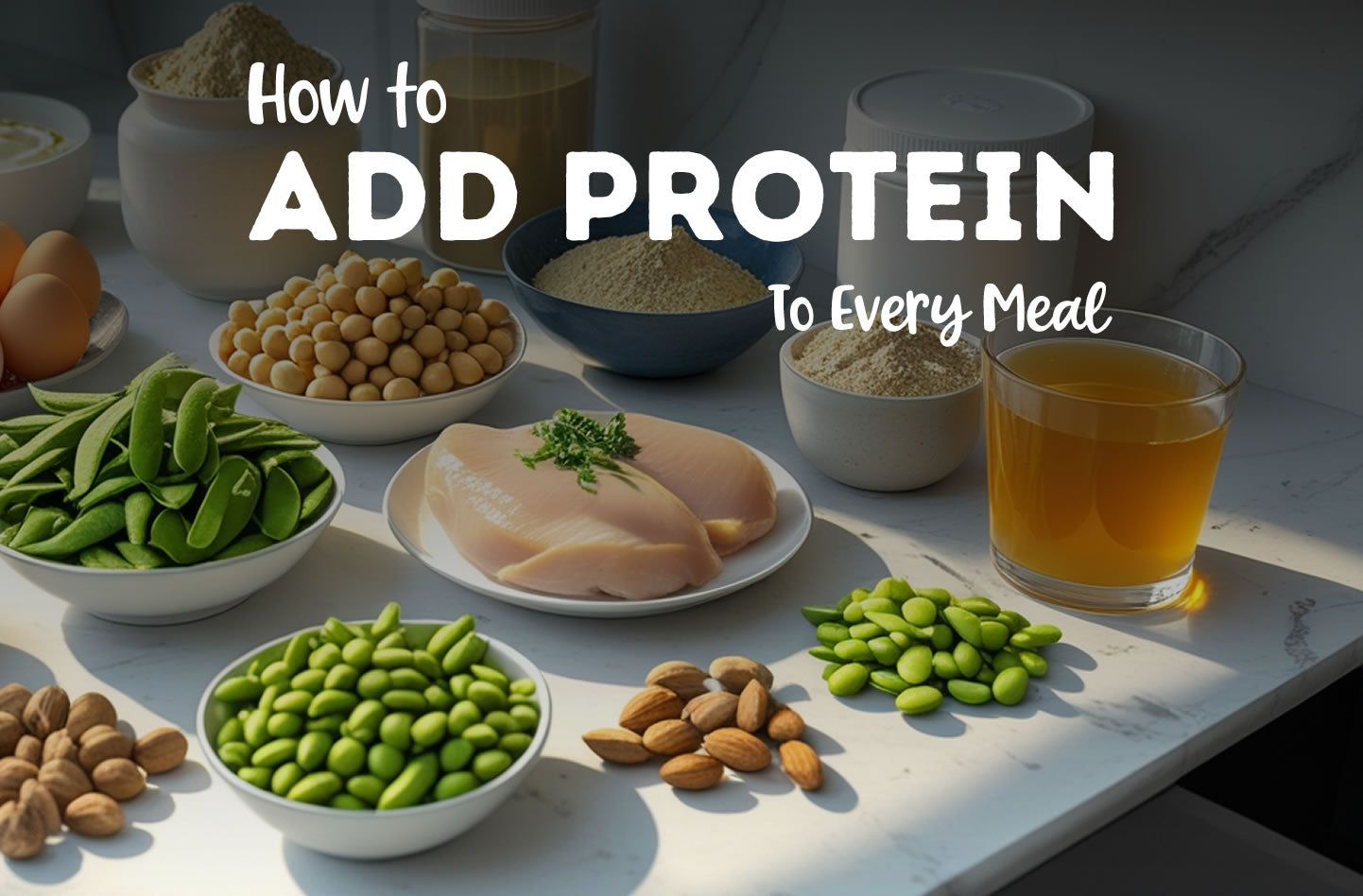To get more protein into your day, you don't need to overhaul your entire meal plan. Small changes in how you shop, prep, and snack can make a noticeable difference.
This is part 2 describing how to get more protein into your diet. You can check out part 1, "How to Sneak More Protein Into Your Diet," here.
With these tips, you can also bypass a food scale or meal-tracking app. You'll find it easier to meet your daily needs when you treat protein like a regular part of every plate (not just something substantial for dinner).
Here are some easy-to-use, low-effort strategies to increase your daily protein intake.
Before you begin - always consult your physician before beginning any exercise (or dietary) program(s). This general information is not intended to diagnose any medical condition or to replace your healthcare professional. Consult with your healthcare professional to design an appropriate exercise prescription (or dietary program) that's right for you.
How to Add More Protein to Your Diet Throughout the Day (Without Overhauling Your Meals)
#1) Start with protein at breakfast
You'll set the tone for your day by including protein in your first meal. Many breakfast options (like bagels, cereal, or toast) are high in carbohydrates but leave you hungry again in just a few hours. Switching to a protein-forward start keeps you full longer and helps maintain steady energy. Scrambled eggs, Greek yogurt, tofu scrambles, or a protein smoothie with collagen or pea/whey powder are quick swaps you can make. If you're in a rush, a pre-prepped hard-boiled egg or cottage cheese cup works in under a minute.
Insider tip: Egg whites pack an impressive 10.8 grams of protein per 50 calories, making them one of the most efficient sources.
#2) Include a protein snack between meals
A snack doesn't have to be just a filler between lunch and dinner; it can also be a stealthy way to sneak in 10–20 more grams of protein. Look beyond chips and aim for options that pull their weight. Think turkey or beef jerky (low-sugar varieties), string cheese, roasted edamame, or even deli meat roll-ups with mustard. If you like sweet snacks, a protein bar, protein-packed pretzels, or Greek yogurt with cinnamon can satisfy cravings and add useful macros.
Insider tip: One ounce of beef jerky delivers about 9 grams of protein and doesn't require refrigeration. It's perfect for bags, desks, or glove compartments.
#3) Boost smoothies or oatmeal
You already have a blender or a breakfast bowl. Now is the time to load them with protein.
Tossing in a scoop of protein powder, nut butter, or milk instead of water gives your smoothie staying power. For oatmeal, stir in egg whites while it cooks or top with cottage cheese, chia seeds, or hemp hearts. These adjustments add depth and density without taking more time in the kitchen.
Insider tip: A tablespoon of hemp seeds adds nearly 3.5 grams of protein with minimal flavor impact.
#4) Swap for smarter ingredients in meals
You can increase your protein intake by making a few ingredient swaps in your dishes. Use Greek yogurt instead of sour cream, add lentil or chickpea pasta instead of white noodles, and reach for quinoa instead of rice. These alternatives carry more protein but feel familiar and easy to integrate. Even soups and stir-fries benefit from tossed-in beans or chopped rotisserie chicken.
Insider tip: Chickpea pasta contains up to 13 grams of protein per 2-ounce serving (more than double the protein in regular pasta).
#5) Sprinkle protein‑rich toppings
Sometimes, the best protein boosts are the ones you barely notice. For example, you can scatter pumpkin seeds, sunflower kernels, nutritional yeast, shredded cheese on salads, roasted vegetables, or avocado on toast. These ingredients add texture and a protein bump without much effort.
Insider tip: Two tablespoons of nutritional yeast provide about 8 grams of complete protein and a natural cheesy flavor to any dish.
#6) Use bone broth or add milk alternatives
When cooking grains or heating soups, switching from water to protein-rich liquids like bone broth makes a difference without changing your routine. Bone broth can add 9–10 grams of protein per cup. It also works well in slow-cooked meals or as a base for sauces. If you're drinking plant-based milk, choose one that contributes meaningful protein. Soy milk or pea-protein blends outperform almond or oat milk, which often have less than 2 grams per serving.
Insider tip: Ultra-filtered milk can contain up to 13 grams of protein per cup (50% more than standard milk).
#7) Include pulses and legumes
You don't need to go vegetarian to use beans to your advantage. Pulses (like black beans, lentils, chickpeas, and edamame) deliver protein plus fiber, making them a valuable addition to nearly any meal. Mix them into chili, grain bowls, taco fillings, or pasta dishes. You can also roast chickpeas for a crispy snack that stores well.
Yes, canned versions of these items work fine (rinse before use).
Insider tip: One cup of cooked lentils provides about 18 grams of protein and slow-digesting carbohydrates that help control appetite.
#8) Prep protein in advance
Eating more protein is easier when you don't have to cook it from scratch every time. Grill or bake several chicken breasts, boil a dozen eggs, or portion out canned tuna into containers at the start of the week. You can also roast chickpeas or air-fry tofu and store them in the fridge. Having these ready lets you throw together meals without thinking or skipping protein (especially when you're short on time).
Insider tip: A large hard-boiled egg has about 6 grams of protein and takes roughly 10 minutes to prep a dozen (12 eggs) for the week.
#9) Include dairy or soy in unexpected places
There are plenty of ways to incorporate protein into recipes without making it the main feature. Add cottage cheese or ricotta to pancake batter, stuff either into egg wraps or blend them into sauces for creaminess and substance. Tofu and tempeh can be diced and sautéed into tacos, stir-fries, or even sandwich fillings. These additions raise your meal's protein content while keeping the flavor of the item(s).
Insider tip: Half a cup of low-fat cottage cheese contains roughly 13 grams of protein, more than double the amount in the same volume of plain yogurt.
#10) Eat protein before carbs
When you fill your plate, go for the protein first. Protein helps with digestion and blood sugar response. Eating protein first with your meal slows down how quickly carbohydrates break down, which leads to better appetite control. You're also more likely to eat enough of it before you fill up on sides or extras. This habit works everywhere! At home, eating out, or cramming your face at a buffet - eat the protein first.
Insider tip: Starting your meal with protein has been shown to reduce post-meal glucose spikes by up to 30%.
Make Protein a Habit, Not a Hassle
Getting more protein doesn't require extreme dieting or complicated meal plans. The strategies above let you increase your intake with minimal effort and no major disruptions to how you already eat. Focus on building small, repeatable habits like upgrading snacks, prepping once a week, and making smart ingredient swaps. These changes are easy to stick with and compound over time. When you treat protein as part of every meal and snack, it becomes second nature. You'll feel fuller, recover faster, and support your daily energy needs without counting every gram.
 Lenny and Larrys
Lenny and Larrys
